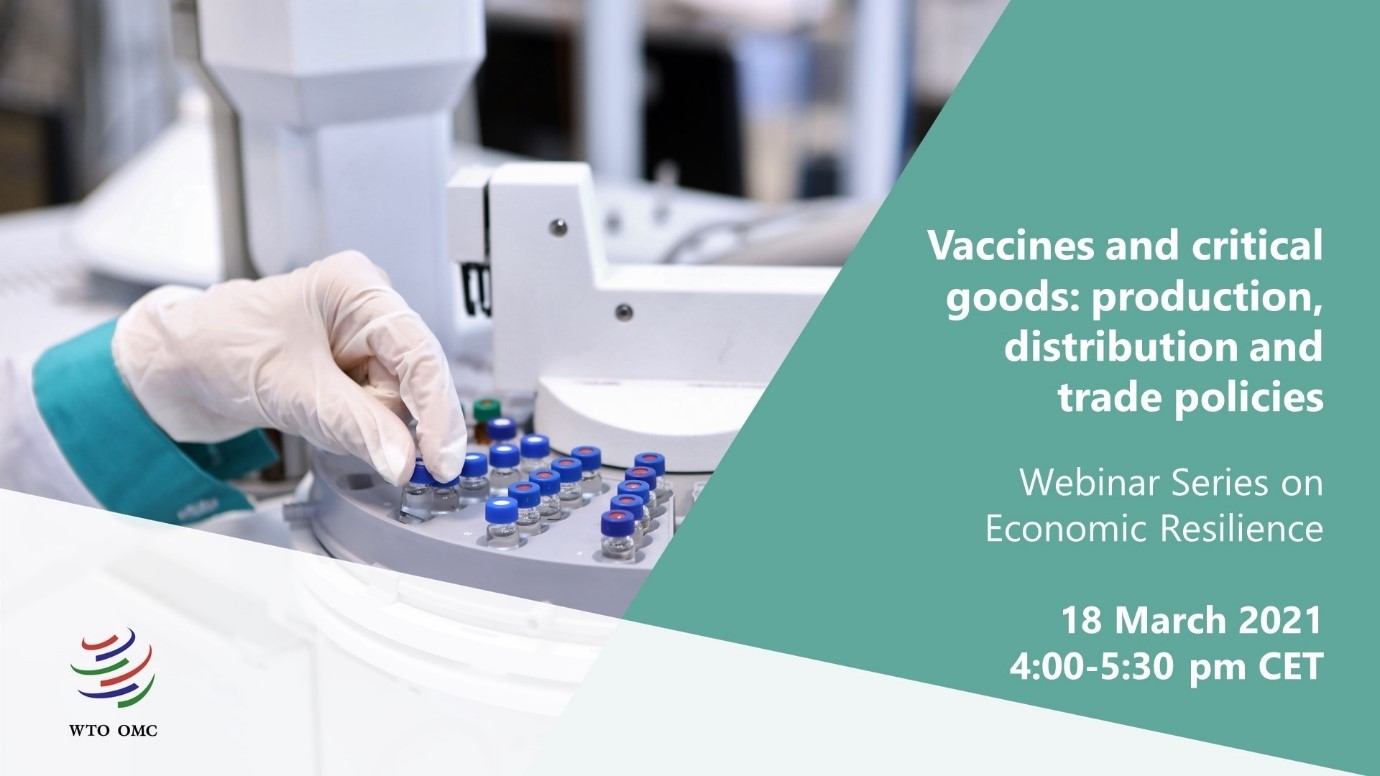
Various effective vaccines protecting against COVID-19 have been developed at record speed in 2020. While much attention is on vaccines, increasingly policymakers have found that improved therapeutic treatments are also a critical tool for mitigating the health impacts of the pandemic. Looking at the longer term the question is how increased coherence between health and trade policies might ensure that governments have relatively efficient and flexible response capabilities depending on the nature of the next health crisis.
Bottlenecks exist in the production of vaccines and the global population, partially in lockdown, is anxiously waiting for vaccines to leave the production facilities of pharmaceutical companies. Although factories are producing at record speed, on a global scale there is a severe imbalance between the need for vaccines and their availability. With hindsight, global policy makers could perhaps have invested more in vaccine production and also focused on improved therapeutic treatments to help manage the crisis. Scarcity of vaccines and therapeutics leads to a risk of export restrictions, threatening the quick production and distribution of these products. Furthermore, vaccines and therapeutics currently produced are not distributed evenly across the globe, mainly going to the richest countries. This analysis leads to four main policy questions for global policy makers:
- What are the costs and benefits of COVID-19 vaccines and therapeutics and how can the global community set up mechanisms to guarantee that in a next crisis the cost-benefit analysis of investments in public goods before and at the onset of a crisis is done accurately?
- How should vaccines and therapeutics be distributed? Is there an economic efficiency (besides fairness) case for a more equitable distribution of these goods?
- There is a debate about the flexibility of the intellectual property framework around production and distribution of these goods? What are the key elements in this debate?
- How costly is the imposition of export restrictions in terms of the risk of disruption of vaccine and therapeutic goods value chains and thus the quick global availability of such goods?
The four policy questions will be addressed by the following five (academic) researchers in a 90 minute webinar with 10- to 15-minute presentations of each of the speakers.
Webcasting
Moderator: Robert Koopman (WTO Chief Economist)
Panellists:
- Professor Michael Kremer (University of Chicago and Nobel Prize Winner)
Market design to accelerate COVID-19 vaccine supply and new work
Presentation - Professor Şebnem Kalemli-Özcan (University of Maryland)
The Economic Case for Global Vaccinations: An Epidemiological Model with International Production Networks
Presentation - Professor Patrick GaulÚ (University of Bath)
What drives innovation? Lessons from COVID-19 R&Ds
Presentation - Professor Arjun Jayadev (Azim Premji University in Bangalore)
Patents vs the pandemic
Presentation - Silvia Sorescu (Policy Analyst, OECD)
Using trade to fight COVID-19: Manufacturing and distributing vaccines
Presentation
Each speaker will make a 10- to 15-minute presentation followed by a 40-minute discussion between the panellists and a Q&A session.
This webinar is open to the public but registration is required. Please register here.
Share
Problems viewing this page? If so, please contact [email protected] giving details of the operating system and web browser you are using.